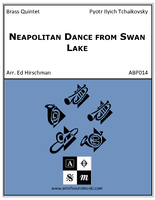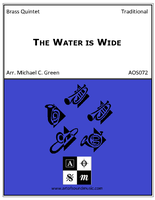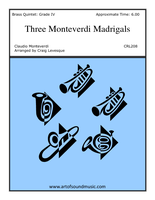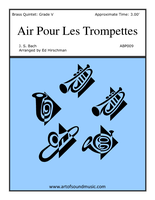Ripresa Volume II
| Arranger | Harbach, Barbara |
|---|---|
| Composer | Aleotti, Vittoria and Raphaela Aleotta |
| Duration | 7 |
| Ensemble | Brass Quintet |
| Genre | Renaissance |
| Grade | 3 |
| Model Number | AOS1436 |
| Category | Brass Quintet - All, Classical, Grade 3 |
Mixed Brass Quintets…see below for instrumentation by movement. All trumpet pats provided in B♭ and C. All Horns in F.
Selections
- Angelus Ad Pastores Ait (Gabriel Said Unto the Shepherds) – 3 Trumpets, Horn and Trombone
- Ascendens Christus In Altum (Christ has Ascended to Heaven) – 2 Trumpets, 2 Horns and Trombone
- Exurgat Deus (Let God Arise) – Standard Brass Quintet
- Facta Est Cum Angelo (With the Angel Suddenly – 2 Trumpets, 2 Horns and Trombone
Program Notes
Vittoria Aleotti/Raphaela Aleotta c. 1574-1646
The identities of Raphaela Aleotta and Vittoria Aleotti are not fully documented. They may have been sisters, but it is not determined who was the elder, or even if Vittoria took the name of Raphaela when she entered the convent of San Vito.
Vittoria was a musical prodigy and was placed in the convent San Vito to further her musical studies when she was seven years old. She decided to remain in the convent, and perhaps changed her name to Raphaela when she took her holy vows. Raphaela stayed at the convent for forty-nine years from 1591-1640. In 1593 Raphaela published Sacrae cantiones, and wrote the dedication herself, the first sacred music by a woman to appear in print.
Ghirlanda de madrigali by Vittoria Aleotti contains eighteen four-voice madrigals for soprano (canto), alto, tenor, and bass. The madrigals are short, imitative, alternating with chordal sections, and with the expected meter changes from duple to triple. Duets and trios are common in the musical fabric. Dissonance is carefully placed both in the melody as well as in the chords. T’amo mia vita, la mia cara vita (I love you my life, my dearest life) and Io v’amo vita mia (I love you my life) are examples of her secular, madrigal style.
The Sacrae cantiones of Raphaela Aleotta contains eighteen motets for a variety of voices from five-part motets to a ten-part motet. The ten-part motet was written by her teacher, Ercole Pasquini. Raphaela states in her dedication that she composed music when she was free from her convent duties of teaching, performing, and participating in religious affairs.
Exurgat Deus (Let God arise and scatter his enemies) is a five-voice motet from Psalm 67. Imitative texture predominates with overlapping cadences. Her melodies are particularly well-constructed and singable. Motets were usually performed by trained singers, and the range of these motets is extended with the soprano going higher than the usual tessitura, while the alto and bass sing lower than the usual range.
Besides her talents as a composer and organist, Raphaela also made major contributions to the convent of San Vito as music teacher and conductor. She participated in the concerto grande, an ensemble of twenty-three singers as well as instrumentalists. Raphaela trained women musicians within the convent and taught young children in the public sphere.
Hercole Bottrigari states in his Il Desiderio of 1594, a dialogue on the musical practice at San Vito:
“It appeared to me that the persons who ordinarily participated in this concert were not human, bodily creatures, but were truly angelic spirits. Nor must you imagine that I refer to the beauty of face and richness of garments and clothing, for you would err greatly, since one sees only the most modest grace and pleasing dress and humble department in them.”
The convent of San Vito in Ferrara was a music training institution, and Maestra Raphaela was the music director. No men were brought in to help teach the young women. Raphaela taught the singers as well as the instrumentalists, and even taught musical instruments that women were not usually permitted to play such as the cornetti, trombone, violin, viole bastarde, cornamuses (bagpipes), and flutes.
The convent was remarkable for its time, and in the history of the convents. These extraordinary musicians were women, and a popular belief of the day stated that since women had little social status or intellect, they could not possibly reach such a high level of performance. Therefore, the musicians “were not human, bodily creatures, but truly angelic spirits.” Therefore, by calling them “angelic spirits,” men did not have to admit nor come to terms with the thought that women were excellent and capable musicians.
During the sixteenth century, the Council of Trent (1545-63) and the Counter Reformation restricted the nun’s participation in music within the convent and their interaction, musical and otherwise, with the outside world. Public concerts were now forbidden in the convent, and no one, male or female, was allowed to enter the convent to teach music. Instruments were forbidden in the convent except for the organ and harpsichord. Although Raphaela remained as organist at San Vito well into her old age, her excellent ensemble had long since been eliminated.









